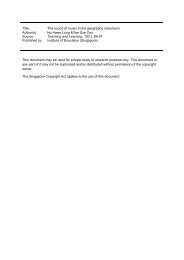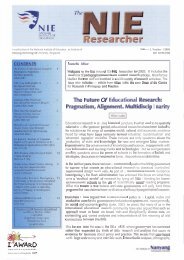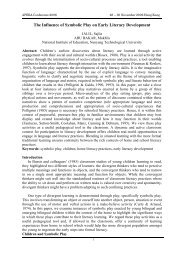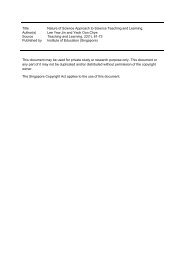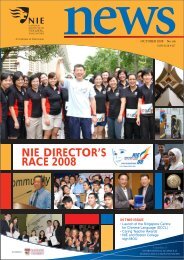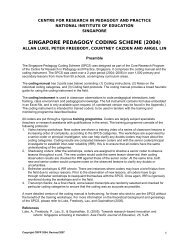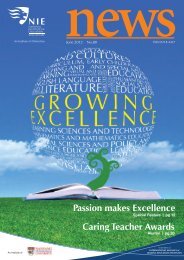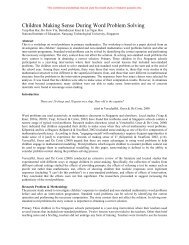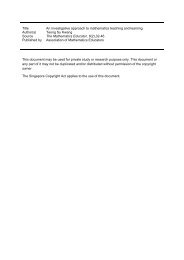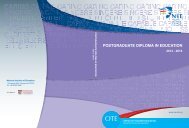Classroom interaction analysis techniques for classroom teachers ...
Classroom interaction analysis techniques for classroom teachers ...
Classroom interaction analysis techniques for classroom teachers ...
Create successful ePaper yourself
Turn your PDF publications into a flip-book with our unique Google optimized e-Paper software.
Redesigning Pedagogy 2011 14Constrained by the space limits, what described here provides only a brief description aboutthe major SNA measures and the way how they can be applied in examining language <strong>interaction</strong> interm of acquisition efficacy. We admit that a number of technical issues need further elaborationbe<strong>for</strong>e teacher can make better use of them to evaluate their <strong>classroom</strong> practices. Obviously, likeany initiative in educational innovation, new technology introduction invariably requires extracommitment from <strong>teachers</strong>. There are cases where <strong>teachers</strong> are not always be able to generate anactual network graph, the SNA may after all be adopted as alternative perspective <strong>for</strong> <strong>classroom</strong>practitioners to gauge their teaching results. If <strong>teachers</strong> and students are regarded as the node, andspeech action measured by either dialogue duration or turns (e.g. Initiate-Respond-Feedback, e.g.,IRF) as the link value, taking into account other influential factors such as family languagebackground, four network graphs can be generated as shown in the Appendix.ConclusionPeople involved in educational research are discontent about the separateness of the researchand practice communities, the limited relevance of educational research, the failure to articulatemanageable research-validated interventions, and the weak opportunities <strong>for</strong> professionaldevelopment. These are also among the primary reasons that explain the current gap betweenresearch and practice in Singaporean context. To avoid the disengagement characterized by doneand-runaway that seen in most research projects, the possibilities of making the research morerelevant that can have actual impacts on <strong>teachers</strong>’ <strong>classroom</strong> practises waw keenly explored incourse of project implementation. A major research methodology of the project is <strong>classroom</strong>observation, which examines what happens in the <strong>classroom</strong> <strong>for</strong> the <strong>analysis</strong> of teacher-student<strong>interaction</strong>. The <strong>techniques</strong> in our case studies enable us to analyze the same class from other angles,which may also enlighten the <strong>teachers</strong> to their teaching with alternative methods.The teaching-learning situation in the <strong>classroom</strong> involves <strong>interaction</strong> between the teacher andthe student. The success of a teacher may be judged through the degree of effectiveness of histeaching which may be objectively assessed through his <strong>classroom</strong> behavior or <strong>interaction</strong>. Thus a



